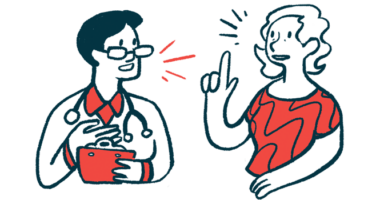Navigating the challenging symptoms of May-Thurner syndrome
In addition to aHUS, I also manage several rare comorbidities

Note: This column was updated Jan. 16, 2025, to correct that Soliris is an antibody therapy.
Pain throbs from the tips of my toes to the top of my left thigh. It echoes the strong, solid melody of my heartbeat. The ache worsens no matter how much I rub my leg.
I try to stand. Maybe walking around will stretch my muscles and ease the pain, I think to myself. My body shakes as I slowly stand because the pain is so intense.
When I lift my leg to take a step, it feels as if the bones in my foot are broken. I nearly fall, not expecting my legs to be so weak. Instinctually, I rub my leg again and realize my skin is hot to the touch. Now I can’t put any weight on my left foot. Is this a blood clot? That’s a question I never thought I’d be asking myself at the age of 39. But it’s a common concern for me every day now.
Let’s go back to what led me to this moment. In September 2020, I was admitted to the intensive care unit because I was dying from multiorgan failure. I’d developed a rare disease called atypical hemolytic uremic syndrome (aHUS), which I’m still dealing with today. I do antibody therapy regularly, have chronic kidney disease and permanent liver damage, and battle uncontrolled severe hypertension.
I have several other comorbidities that developed due to aHUS. But one of my scariest and most frequent issues is May-Thurner syndrome (MTS). MTS is a rare vascular condition that occurs when the right iliac artery compresses the left iliac vein. This reduces blood flow to my left leg, causes painful swelling, and increases my risk of blood clots — which are also a symptom of aHUS.
The effects of MTS
Having one rare disease apparently wasn’t enough. MTS started for me in 2021 and causes my entire left side to swell, including my leg, foot, arm, hand, and even my face. I also had a ministroke on that side during my initial aHUS attack.
The pressure is so intense that my blood pressure is higher in my left arm than in my right one. During my infusion last week, my blood pressure in my right arm was lower than usual at 140/93 mmHg. This was great news, as I’ve spent two years adjusting my medications in an effort to lower my blood pressure. But my left arm measured 195/160 mmHg, which alarmed my nurse. It’s all part of my usual health drama.
In addition, the veins in my left arm no longer cooperate. When nurses try to draw blood, nothing comes out. When they try to run IVs, fluid won’t push in. This strange issue means my right arm gets overused. I worry about scar tissue developing in my veins, as I may need antibody therapy and bloodwork for the rest of my life.
Worst of all, the pressure occasionally gets so bad that my foot and leg are unusable. Gripping, shocking pain strikes like lightning with each step. The last time my leg gave out, I couldn’t walk for three days. Every time it happens, I have to go to the hospital and get checked for blood clots.
I feel ridiculous whenever that happens, as if I’m being alarmist. But blood clots are a huge risk. MTS isn’t a common aHUS complication, but I wouldn’t expect anything less from my strange body.
My medical team thinks I developed MTS because I’m on such high dosages of hypertension medications. They’re opening my arteries so much that it’s causing that iliac artery to compress the vein.
So I’m faced with a dilemma: Do I continue taking medications to control my blood pressure and prevent heart attacks? Or do I stop them to minimize the swelling, pain, and risk of blood clots in my left side? Worst options ever.
For now, I’ll continue to take as little blood pressure medicine as I can (under my doctor’s supervision), and attempt to go easy on my left leg. At least I can recognize the warning signs that my leg is about to become unusable. When that happens, I take off my shoes, rest, apply heat, and elevate to hopefully save myself days of pain.
Note: aHUS News is strictly a news and information website about the disease. It does not provide medical advice, diagnosis, or treatment. This content is not intended to be a substitute for professional medical advice, diagnosis, or treatment. Always seek the advice of your physician or other qualified health provider with any questions you may have regarding a medical condition. Never disregard professional medical advice or delay in seeking it because of something you have read on this website. The opinions expressed in this column are not those of aHUS News or its parent company, Bionews, and are intended to spark discussion about issues pertaining to aHUS.







Leave a comment
Fill in the required fields to post. Your email address will not be published.